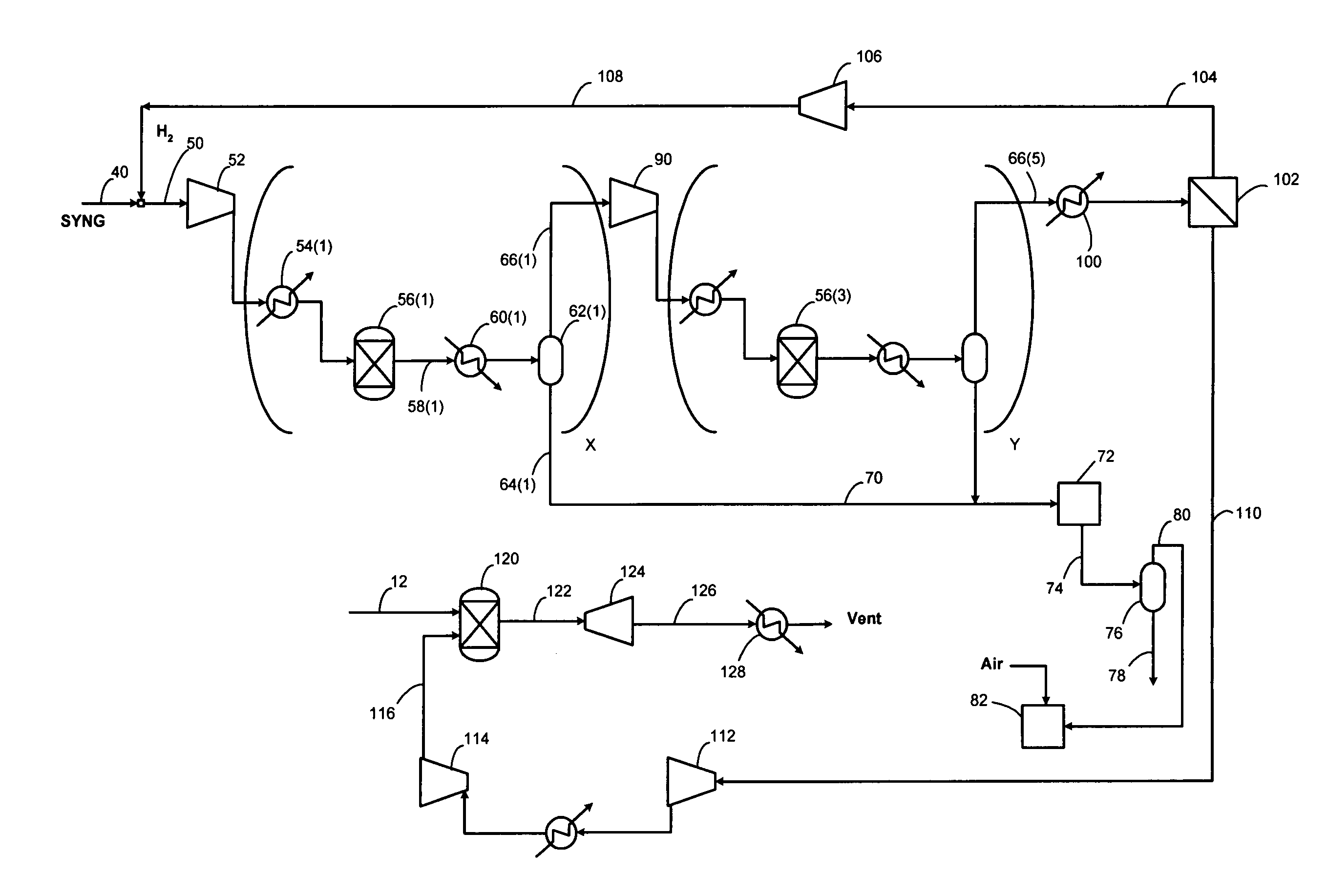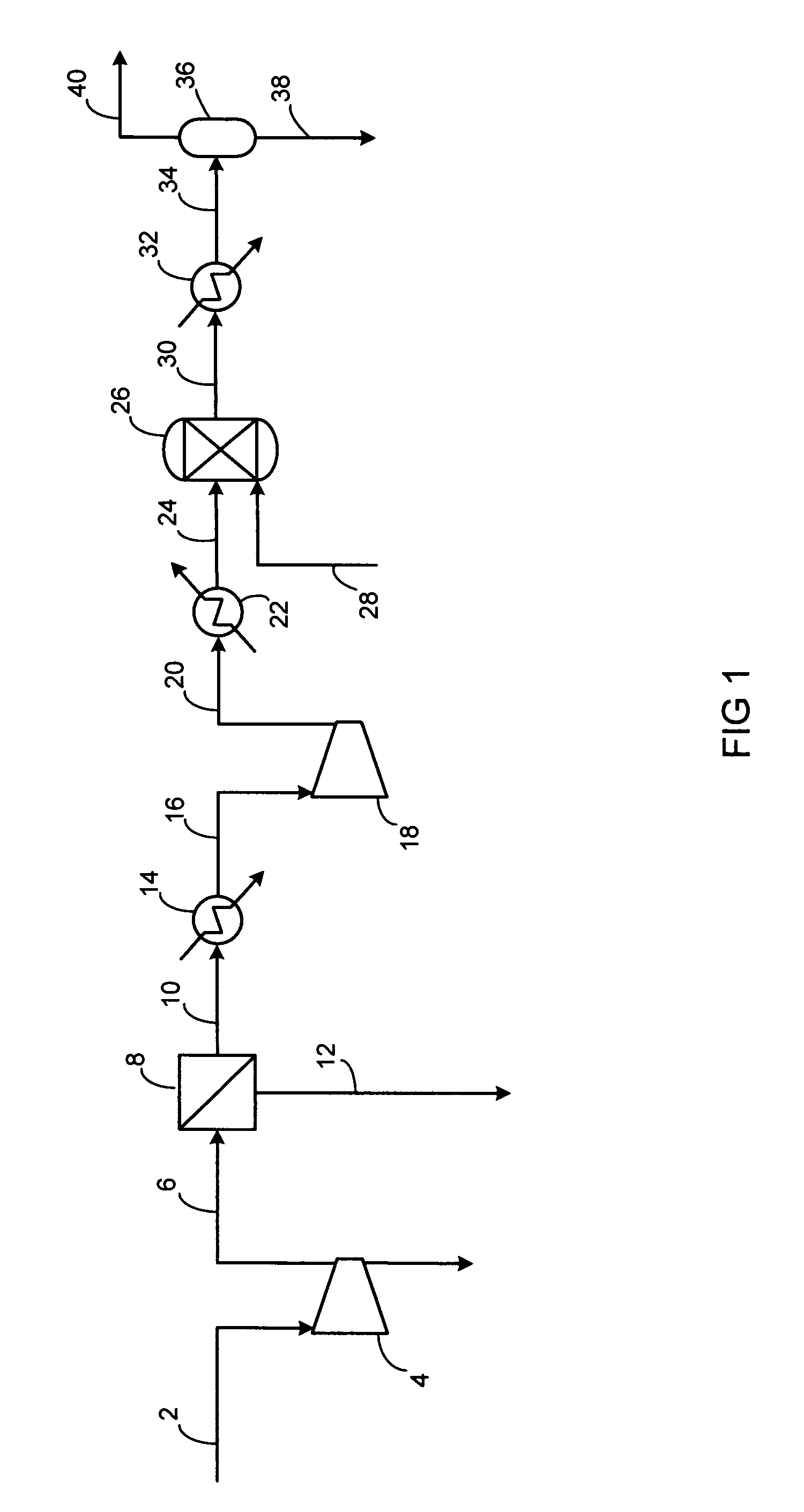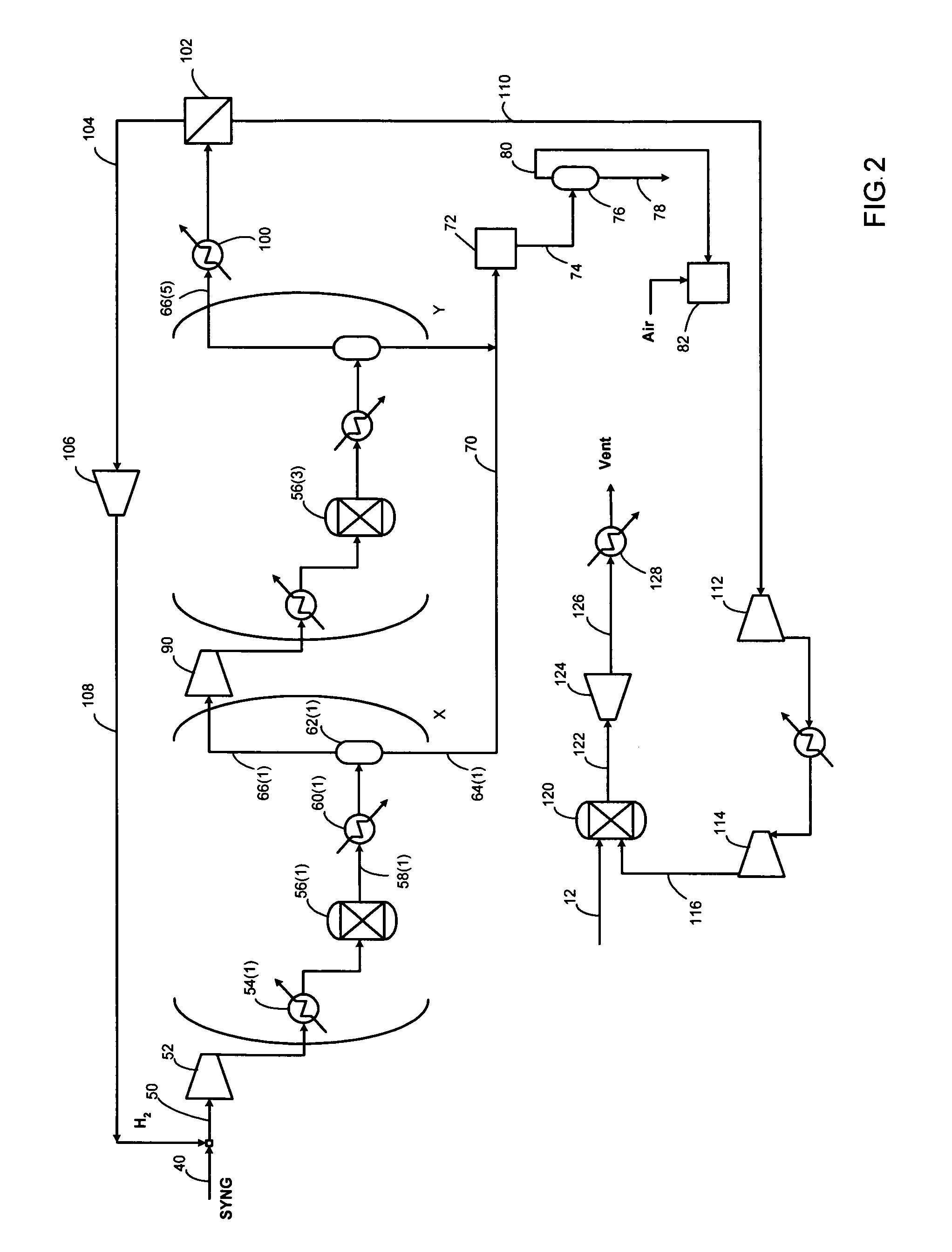High efficiency process for producing methanol from a synthesis gas
- Summary
- Abstract
- Description
- Claims
- Application Information
AI Technical Summary
Benefits of technology
Problems solved by technology
Method used
Image
Examples
Embodiment Construction
[0019]This invention comprises an energy efficient process for the production of methanol from natural gas, which process is not subject to the limitations upon the freedom of chemical operations that an integrated gas turbine, as is the case with the process of Van Dijk U.S. Pat. No. 5,472,986, would impose. This invention utilizes a high pressure non-permeate gas stream of low BTU content obtained from a partial expansion of a very high pressure (i.e., about 786 psi) tail gas of the process down to a high pressure (i.e., about 176 psi) together with a high pressure non-permeate gas stream of low oxygen content (i.e., about 176 psi) to achieve this energy efficient process by passing these non-permeate, high pressure streams (i.e., about 176 psi) in combination into contact with an oxidizing catalyst, so to significantly increase the temperature of these combine high pressure gas streams, for increased working energy recovery therefrom, as by their expansion through a hot gas expan...
PUM
| Property | Measurement | Unit |
|---|---|---|
| Temperature | aaaaa | aaaaa |
| Pressure | aaaaa | aaaaa |
| Ratio | aaaaa | aaaaa |
Abstract
Description
Claims
Application Information
 Login to View More
Login to View More - R&D
- Intellectual Property
- Life Sciences
- Materials
- Tech Scout
- Unparalleled Data Quality
- Higher Quality Content
- 60% Fewer Hallucinations
Browse by: Latest US Patents, China's latest patents, Technical Efficacy Thesaurus, Application Domain, Technology Topic, Popular Technical Reports.
© 2025 PatSnap. All rights reserved.Legal|Privacy policy|Modern Slavery Act Transparency Statement|Sitemap|About US| Contact US: help@patsnap.com



